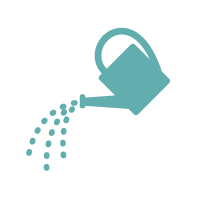Overview
The Maricopa County Department of Public Health (MCDPH), Arizona, leverages collaborations with public and private partners to protect and promote public health with very limited resources. To build health equity capacity, MCDPH conducted an internal assessment survey, piloted a lunch-and-learn series, partnered with consultants to provide trainings and support workplan development, and incorporated their work into the Department’s “cloud” structure.
Who Took This On
Maricopa County Department of Public Health, AZ
Ways You Can Get Started
- Use the BARHII Organizational Self-Assessment Toolkit to assess internal staff readiness and capacity to advance health equity
- Organize screenings of Unnatural Causes and The Raising of America to facilitate dialogues among staff about the root causes of health inequities and opportunities for health department action
See Advice for Local Health Departments below for more ways to take action.
What Sparked This?
Maricopa County is very resource constrained compared to other large local health departments
The Maricopa County Department of Public Health (MCDPH) is the third most populous local public health jurisdiction in the United States after New York City and Los Angeles County, serving a population of more than 4 million people, or 60% of Arizona’s population. Yet the department is among the least resourced local health departments for a large jurisdiction in the United States. It receives less than $3 per person per year from local tax revenue and $11.75 per capita, which is less than one-fifth of the national average ($64.74). Both the Maricopa County and Arizona State health departments have also experienced significant cuts in state and federal funding.
Given their very limited funding and capacity, MCDPH sought to partner with public and private organizations including hospitals, clinics, schools, community-based organizations, businesses, and others as much as possible to help protect and promote the public’s health.
Community Health Assessment leads to Health Improvement Partnership formation
As part of their public health accreditation process, MCDPH used the Mobilizing for Action through Planning and Partnerships framework to conduct their first Community Health Assessment (CHA) in 2011. Partnering with the Arizona Department of Health Services, the 2 organizations facilitated a collaborative, community-driven effort over 18 months that engaged over 1,000 residents, health professionals, and community partners through surveys and 22 focus groups.
The CHA process led to the development of the Maricopa County Health Improvement Partnership, which is the mechanism for broad, inclusive collaboration between MCDPH and their community partners to address priority health areas. The Health Improvement Partnership is coordinated by MCDPH and involves 55 public and private organizations working across Maricopa County to develop and implement the 2012–2017 Community Health Improvement Plan (CHIP). In 2015, the Health Improvement Partnership received funding from the Robert Wood Johnson Foundation as part of the SCALE (Spreading Community Accelerators through Learning and Evaluation) Initiative to accelerate health improvement practices for targeted populations.
Collaboration coordinated through “cloud” structure
To facilitate collaboration during its first CHIP cycle, MCDPH developed both an external and an internal “cloud” structure. Using the concept of a data cloud that has the capacity to store, process, and cross-link a large, diverse amount of data, the public health clouds are intended to increase capacity and add capabilities to the existing public health system. MCDPH developed the clouds to break down silos, improve communication, leverage resources, build relationships and linkages, reduce duplication of efforts, spark ideas, and increase collaboration.
External clouds were organized around 4 main community sectors:
- The Community Cloud – Focuses on improving health outcomes by addressing issues and activities during the course of everyday life in physical, social, or cultural environments
- The Worksite Cloud – Focuses on improving health status within public and private workplaces via worksite health and employee wellness initiatives
- The Education Cloud – Focuses on positively affecting health within public and private learning environments including pre-K, elementary schools, middle schools, high schools, charter schools, colleges, and universities as well as before- and after-school programs
- The Healthcare Cloud – Focuses on improving health status in clinical and medical settings including hospitals, urgent care centers, primary care facilities, mobile medical facilities, physicians’ offices, community health centers, and other clinically oriented settings
Each of the external clouds sought to engage organizations, associations, advocacy groups, and institutions that were involved in the Health Improvement Partnership and/or work in the sector area. Participation varied depending on the nature of the organization, its desired involvement, and available resources. Community partners chose to work within 1 or more clouds. MCDPH staff participated actively in the external clouds, providing leadership and coordination, evaluation technical assistance, policy expertise, data and statistics, and communication support throughout the process. After about 6–9 months of experimenting with this external structure, MCDPH received feedback from the coalition that they preferred to meet in 1 large group rather than as subgroups (as many of the participants were participating in more than 1 cloud). From this point forward, the coalition functioned as 1 large group.
Simultaneously within MCDPH, internal cross-departmental cloud groups were also formed with the goals of breaking down silos, improving communication, leveraging resources, reducing duplication of efforts, and increasing collaboration. These internal sector cloud meetings occurred monthly under the direction of a cloud leader with support from staff across the Department and a Department leadership strategic coordination team. Staff were encouraged to bring program updates and opportunities for collaboration, as applicable, and take cloud updates back to their team to foster broader communication.
Clouds help create Community Health Improvement Plan
Public and private partners participating in the external cloud structure directly contributed to the development of the 2012–2017 Community Health Improvement Plan. Partners contributed specific initiatives they were working on in each of the 5 CHIP-identified health priorities: reducing obesity, diabetes, cardiovascular disease, and lung cancer, and improving access to care. The CHIP consisted of these community initiatives and was updated by MCDPH each quarter based on partners’ status reports. The final Maricopa County CHIP was released in 2012 and continues to be updated with community initiatives.
Program Description
In December 2015, MCDPH created a Health Equity Task Force to draft and recommend policies and procedures to guide the Department toward effective inclusion of social, cultural, and linguistic characteristics of the populations it serves.
The Task Force includes representatives from across MCDPH including Program Operations, Human Resources, Community Health Action, WIC, Tuberculosis Program, and the Offices of Healthcare Innovation, Community Empowerment, Nutrition and Physical Activity, School Health and Wellness Initiatives, Performance Improvement, Public Health Policy, and Family Health.
Organizational self-assessment survey
One of the Task Force’s first activities was to survey staff to get a baseline measurement of their understanding and perception of health equity. After scanning existing health equity staff surveys, Task Force members selected the Bay Area Regional Health Inequities Initiatives (BARHII) Organizational Self-Assessment Toolkit, which was designed for local health departments to develop their capacity to address health inequities. One component of the toolkit is a survey of 100+ questions to gain an organization-wide picture of attitudes, practices, competencies, structures, and challenges related to addressing the root causes of health inequities.
The Task Force selected a subset of 37 questions based on MCDPH priority areas and administered the survey in the spring of 2016. Eighty-two percent of agency staff (496 people) participated in the survey. Responses provided a baseline assessment of staff perceptions of the Department’s health equity focus. For example, when asked the extent to which MCDPH focuses on addressing health inequities, 46% of staff responded that MCDPH focused the right amount, 32% stated there was not enough focus, 2% stated there was no focus, 1% stated there was too much focus, and 19% stated they didn’t know.
Lunch-and-learn programs
The Task Force organized a pilot “lunch-and-learn” program to screen health equity documentaries — Unnatural Causes: Is Inequality Making us Sick? and The Raising of America — and facilitate intergroup dialogue on health equity topics. One of the main goals was to increase participant knowledge about the social determinants of health, health equity, the wealth-health gradient model, and the concept of intersectionality. These sessions fostered a safe place for learning and dialogue. Staff participated in pre- and post-screening surveys that measured comprehension of health equity and social justice messages, and results showed statistically significant gains in knowledge.
Partnership with outside consultants
MCDPH also leveraged accreditation funding to hire Human Impact Partners (HIP) and Health Outreach Partners (HOP) to support internal health equity capacity building. MCDPH contracted HIP to: 1) conduct staff focus groups to evaluate current health equity practice; 2) plan and deliver trainings for key staff and leadership; and 3) develop a report outlining possible strategies to advance health equity and inform future workplans. MCDPH contracted HOP to develop and present a 90-minute webinar on Culturally and Linguistically Appropriate Services (CLAS) standards and cultural competency.
Over summer and fall 2016, HIP conducted 6 focus groups to gauge how MCDPH currently incorporates health equity into their work and identify health equity practices that worked well and opportunities for improvement. HIP also facilitated 2 1-day workshops for 25 staff members to build department “health equity champions,” and a 2-hour condensed training for senior MCDPH leadership. All MCDPH staff were invited to participate in the HOP webinar, which was recorded and will be used in MCDPH’s new training system.
Developing draft workplan
Building on the knowledge gained from the focus groups and conversations with staff during trainings, HIP developed a report for the Health Equity Task Force to guide their subsequent workplan, which was organized around the inside-outside strategic practices.
The Task Force used a participatory coding process to prioritize the strategic practices recommended by HIP and develop more concrete actions and visionary statements. They also identified key leadership with whom to share the specific proposed activities (e.g., the Director of Health). The group is close to completing the final draft of their plan.
Creating Health Equity Cloud
To institutionalize their health equity work, MCDPH senior leadership approved the Task Force as a “sector cloud” in spring 2017 to align the Department’s work toward accreditation. The Health Equity Cloud will:
- Ensure MCDPH considers health equity and addressing health disparities as departmental priorities
- Review the findings from the CLAS assessment and make recommendations for improvement
- Establish policies, procedures, and performance indicators related to addressing equity
- Provide guidance to program managers and supervisors
- Identify best practices in creating culturally and linguistically appropriate programs, interventions, and materials and discover and share “bright spots” locally and nationally where others are successfully creating a culture of health equity
Work with the Workforce Development Cloud on appropriate training to ensure that staff are aware of the needs of the communities MCDPH serves and how they can most effectively serve their communities in the context of cultural, social, and linguistic competency
Outcomes and Impacts
-
Health Equity Task Force becomes Health Equity Cloud
Transitioning from a task force to a cloud represents greater organizational commitment and leadership engagement as the cloud structure is closely connected to the county’s community health improvement planning process.
-
Health equity work presented to Association of Maternal and Child Health Programs
Key members of the Health Equity Task Force presented the Task Force’s preliminary work at the 2017 annual conference of the Association of Maternal and Child Health Programs.
-
Early work helps build understanding, sense of urgency, and future plan
MCDPH staff note that the Health Equity Task Force’s early work to assess organizational capacity, pilot learning opportunities, and conduct health equity trainings has helped: 1) drive MCDPH toward understanding health equity and systems of oppression; 2) create urgency to learn more about and support historically under-served communities; 3) encourage staff to get involved; and 4) foster a culture of health equity where employees have the opportunity to build their health equity consciousness in a safe learning environment.
-
Staff inspired and motivated by NACCHO Conference
In July 2016, NACCHO’s annual conference was held in Phoenix with a theme of “Cultivating a Culture of Health Equity.” Given its location, many more MCDPH staff were able to attend than in previous years, and the conference helped build momentum and excitement to work on health equity locally.
Future Steps
MCDPH’s Health Equity Cloud will finish their draft health equity plan and begin implementing the activities, which will likely include internal strategies within the Department (e.g., to address hiring practices, capacity building and training, and normalizing conversations about health equity and racism) and external strategies to work with community partners (e.g., immigrant advocacy organizations and organizations working to address the social determinants of health and build community power) to leverage the Health Department’s data, facilitation, analysis, and other resources.
To maintain their public health accreditation, MCDPH must conduct and update their Community Health Assessment and subsequent Community Health Improvement Plan every 5 years. In collaboration with their Health Improvement Partnership partners via the sector clouds, MCDPH will further expand community engagement activities to inform their second CHA and CHIP. Health Equity Cloud members hope to incorporate health equity plan activities into the revised CHA and CHIP to establish health equity as a greater organizational and community priority with a clear plan of action.
Advice for Local Health Departments
-
Connect with others
Connecting with national groups like NACCHO, Public Health Awakened, Human Impact Partners, CityMatCH, and GARE can help you learn what others are doing. Even though some MCDPH staff feel constrained by their political context and lack of resources, being connected to others nationally helps maintain inspiration and insight into small things that can be done to help their work keep moving forward.
-
Look at historical lessons learned
People in public health, medicine, social work, and other fields have been talking about the importance of equity for decades using different terms, but with the same intent of changing the status quo and creating better opportunities for everyone. It’s important to learn what has worked and what hasn’t, and to connect with the many people who have been improving equity in their own ways and disciplines.
-
Process takes time and nuance
In resource-limited contexts, it can be easy to get frustrated. It’s important not to give up, to keep going, and to recognize that every little change can have some impact in bettering the current conditions.









